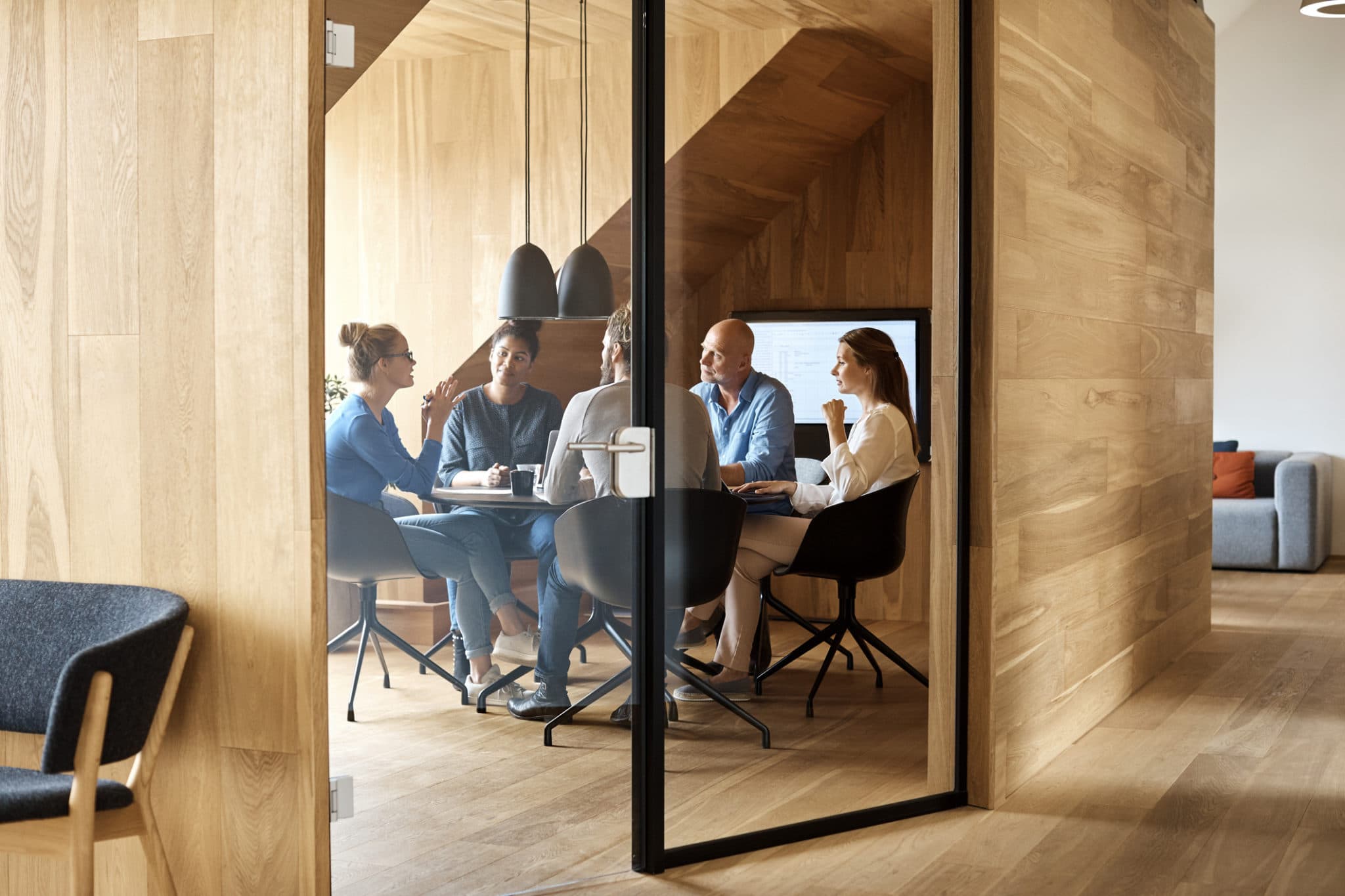Highlights:
- 55% of employees want to work remotely at least three days a week.
- Hybrid work businesses will need to take both offices and homes into account.
- Here are several qualities of successful hybrid workplaces.
Hybrid work is no longer a myth. A PwC survey found that most companies are already moving toward a hybrid workspace, defined as one where many office employees rotate in and out of shared office spaces.
Google is the latest to join the fray. Citigroup announced that most of its employees are now considered hybrid and expected to work in the office at least three days a week. Ford said that 30,000 of its North American employees will work a flexible hybrid model where they are on-site for certain projects or meetings but otherwise work independently at home.

Learn more
And employers aren’t the only ones leading the way. Employees have a big stake in the game. The same PwC survey found that 55% of employees want to work remotely at least three days a week post-pandemic.
With hybrid work on the horizon, let’s look at some of the qualities of a great hybrid environment.
Rethinking the office

A hybrid approach means seriously reconsidering a company’s workspace.
Ranjan Singh, executive VP of technology for the workplace tech firm Creston, told TechRepublic, “Offices will transition to collaborative spaces, where the focus is on team connection and collaboration, versus a place to come, do work at a desk, maybe attend a few meetings in a boardroom, and leave.”
Huddle rooms—small meeting rooms for perhaps four to six employees fitted with audio and video conferencing equipment—are essential. They allow small groups of teammates to quickly gather to chat together or speak with a client on a video call.
You’ll still need to provide areas where employees can focus. Consider flexible spaces like small, single-person workstations and focus rooms that workers can book as needed. Perhaps you set up flex desking, where desks don’t belong to any one person since everyone isn’t there every day and there’s a reservation system for signing up for a desk in the morning. Or maybe it’s first come, first served. With shared desks, employees won’t be able to leave personal items out, so consider providing lockers.
Consider incorporating wayfinding into your office for people who aren’t there regularly. Do this by creating an interactive, up-to-date floor plan of the office with rooms, desks, and technology labeled.
Rethinking home offices

The success of the hybrid workplace means making sure your workers are set up for success at home, too. When the pandemic hit, we started working at home unexpectedly and had to make do. Some people worked from the dining room table—are they still? Leaders can take a proactive approach to making sure employees work efficiently, comfortably, and ergonomically at home.
Inquire about their equipment. Do your employees have a dedicated desk and comfortable office chair? Do they have the right computer monitor, and is it at the right height? Do they need a second monitor? Is there a fast and reliable WiFi connection and sufficient lighting? What about a laptop, cell phone, router, printer, headphones, and webcam? Many companies provide a one-time or recurring monthly stipend for employees’ home offices.
Ask about their everyday tools too. Do they have the right apps? Do those apps maximize their productivity? What other tools do your employees need to work from home? Regularly checking in on their needs ensures that they’re fully equipped.
Anywhere workers

Fully remote workers should feel they are part of the office, too, no matter where they work from, and they should have the same considerations as hybrid workers. But you’ll need to take different approaches to collaboration for those who work from anywhere.
Video conferencing is the remote worker’s best friend. They’ll need enterprise-grade software that lets them communicate and collaborate through audio and video, share screens, share files, live stream, record meetings, and more.
Ideally, their video conferencing is integrated with team messaging too. One where conversations can seamlessly move from message to video with a single click, and workers always know where to find the right context.
The future of hybrid work
These setups only scratch the surface of what makes for successful hybrid work environments. Businesses will have to consider other factors including company culture, leadership, compensation, and more. It’s also important to note that since hybrid work was essentially unknown until COVID, these setups aren’t tried and tested.
But despite the newness of it all, we know after a year of remote work that there’s no turning back to the old normal. The sooner we embrace change, the sooner we can adapt to our new work lives.
Looking For Startup Consultants ?
Call Pursho @ 0731-6725516
Telegram Group One Must Follow :
For Startups: https://t.me/daily_business_reads







